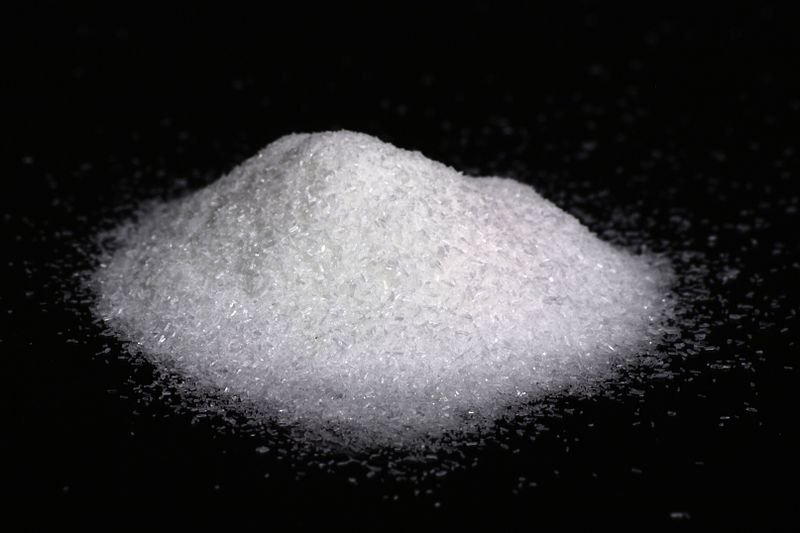In 1908, a research scientist in Tokyo named Kikunae Ikeda got his panties in a twist over the taste of the seaweed broth he was eating. Specifically, it drove him nuts that the broth had a flavor that didn’t really fit into the existing pantheon of sweet, sour, bitter, or salty. Rather than just moving on his with life, Kikunae instead made up his own flavor, which he called umami, the Japanese word for delicious, and then spent the next year trying to isolate the source of his new flavor. Eventually, Kikunae managed to distill the essence of his umami flavor into a white powder. As you can probably already guess, this powder was monosodium glutamate, also known as MSG by those who don’t have the time to not use acronyms.
Within less than a year of being invented, MSG was being manufactured as a food additive. At a time when scientific progress was seen as a good thing, what with humankind giving mother nature and her limitations the finger and all, MSG quickly became a widely used flavor enhancer throughout Japan. It probably didn’t hurt anything that MSG was delicious as fuck. Now MSG might have remained a simple curiosity of Japanese cuisine, if it wasn’t for the fact that the Japanese were pretty hog wild about invading other countries at the time. Over the next several decades, the Japanese Imperial Army cut a swath through Asia, conquering Taiwan, Korea, and northern China. The people who lived in these places were less than pleased by this turn of events, what with all the wanton crimes against humanity and the such, but they were rather happy with the new delicious flavoring the Japanese brought with them. In fact, the flavoring proved so popular, that it spread beyond the Japanese controlled territories. Of course, Japanese rule didn’t last forever, what with a little thing called World War II, but the popularity of MSG remained. Following World War II, MSG found its way across the Pacific to the United States, first via Chinese restaurants, which had become popular amongst returning American GIs, and then via the big food companies who dumped it in pretty much any processed food they could.
This all changed in 1968, when a recent immigrant from China, Dr. Ho Man Kwok wrote a letter to the New England Journal of Medicine. In his letter, Dr. Kwok, who was from southern China, complained that every time he ate at restaurants serving cuisine from northern China, that he got a headache and felt a numbness in his arms and back and a general feeling of weakness. Dr. Kwok blamed MSG, which at the time was much more common in northern Chinese cuisine. This probably had nothing to do whatsoever with the chemical’s Japanese origin or the fact that Dr. Kwok had grown up in China during the Japanese invasion. Now Dr. Kwok had no proof whatsoever, but of course this didn’t stop things from getting crazy as shit. Soon after Dr. Kwok’s letter, many other doctors also began writing letters to the New England Journal of Medicine describing similar symptoms, which became known as Chinese Restaurant Syndrome. The New York Times eventually noticed all the random talk by prominent doctor types, and ran with the story, of course using a headline written in such a way as to be as racist as possible. Other newspapers ran with it from there, also using super racist sounding headlines, and suddenly everyone and their fucking dog were reporting a growing list of symptoms every time they ate Chinese food, then eventually food from any Asian country.
Of course, all of this was a bunch of bullshit. Even though MSG was heavily used in American processed food, nobody was claiming that they were getting headaches from their can of Campbell’s soup. As well, though tens of millions of Japanese and Chinese people had been eating MSG every day for decades, none of them were reporting any problems either. However, this didn’t stop Americans from freaking right the fuck out, a situation little helped by the publication of several dubious scientific research papers which linked MSG consumption to a rising list of maladies, including brain lesions and female sterility. Many of these studies were published by a researcher named Dr. John Olney, who became a major advocate of a growing movement of idiots who were calling for the outright banning of the flavoring. In this they were less than successful, probably because of the much more numerous number of studies showing that MSG was perfectly safe. Of course, Olney and his allies in turn claimed that all of these studies were obviously flawed since any researcher who disagreed with them obviously had to be in bed with the big food industry.
Though unsuccessful in getting MSG banned, the whole mess did result in Chinese restaurants across the country changing their recipes to be MSG free in order to avoid the risk of losing business. In comparison, the big food manufacturers continue to use MSG in all sorts of food products to this day, with little to no negative affect on the health of their customers or their bottom lines. Despite close to half of Americans still being convinced MSG is poison as shit, the average American still consumes over half a gram every day.
Image: https://commons.wikimedia.org/wiki/File:Monosodium_glutamate_crystals.jpg
